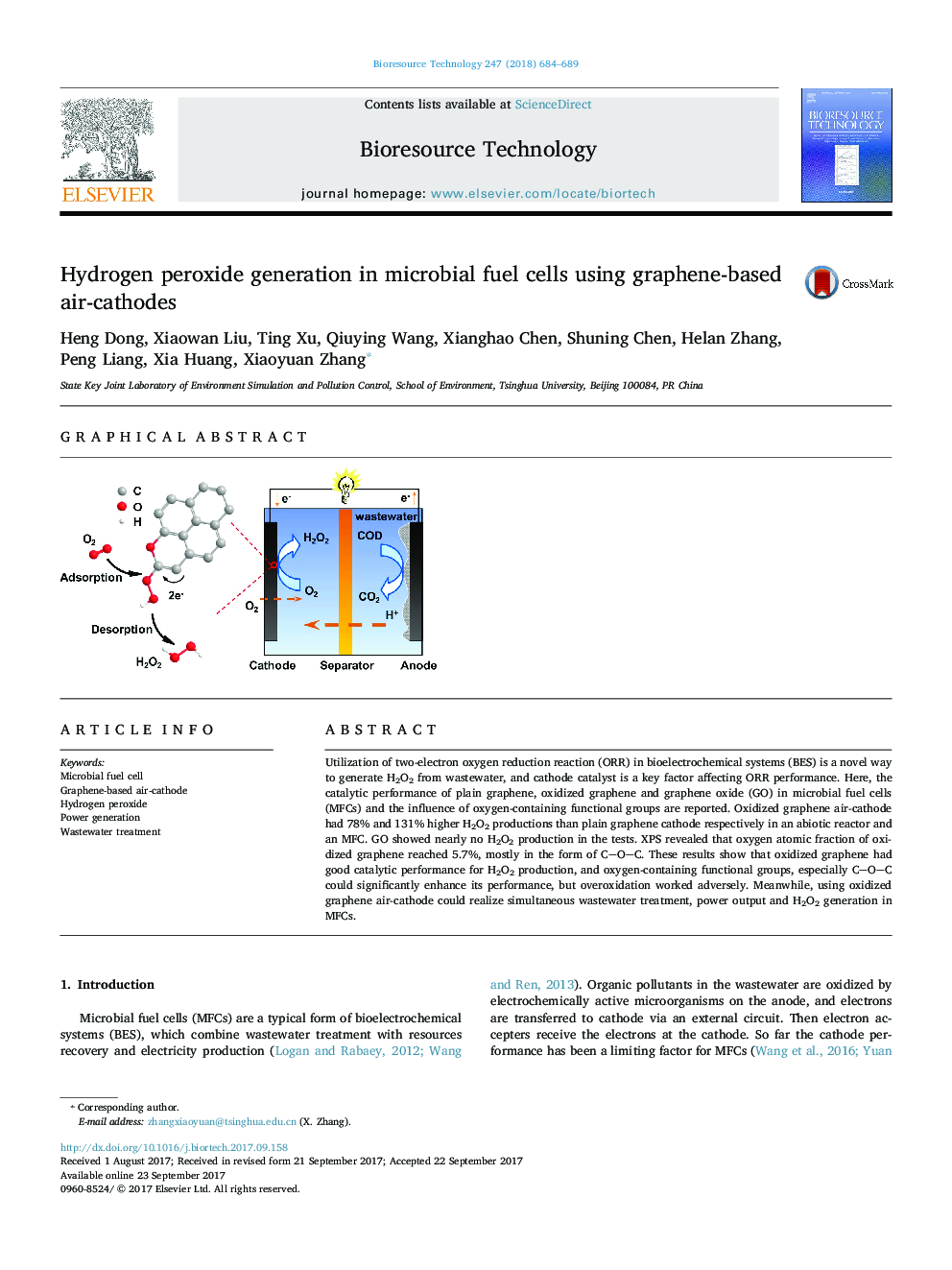| Article ID | Journal | Published Year | Pages | File Type |
|---|---|---|---|---|
| 4996692 | Bioresource Technology | 2018 | 6 Pages |
â¢Oxidized graphene cathode MFC achieved water treatment, power and H2O2 production.â¢Oxidized graphene cathode had a 131% more H2O2 production than graphene in MFC.â¢Epoxides might enhance the catalytic performance of graphene for 2-electron ORR.â¢Overoxidation of graphene led to a poor catalytic performance for H2O2 production.
Utilization of two-electron oxygen reduction reaction (ORR) in bioelectrochemical systems (BES) is a novel way to generate H2O2 from wastewater, and cathode catalyst is a key factor affecting ORR performance. Here, the catalytic performance of plain graphene, oxidized graphene and graphene oxide (GO) in microbial fuel cells (MFCs) and the influence of oxygen-containing functional groups are reported. Oxidized graphene air-cathode had 78% and 131% higher H2O2 productions than plain graphene cathode respectively in an abiotic reactor and an MFC. GO showed nearly no H2O2 production in the tests. XPS revealed that oxygen atomic fraction of oxidized graphene reached 5.7%, mostly in the form of COC. These results show that oxidized graphene had good catalytic performance for H2O2 production, and oxygen-containing functional groups, especially COC could significantly enhance its performance, but overoxidation worked adversely. Meanwhile, using oxidized graphene air-cathode could realize simultaneous wastewater treatment, power output and H2O2 generation in MFCs.
Graphical abstractDownload high-res image (132KB)Download full-size image
